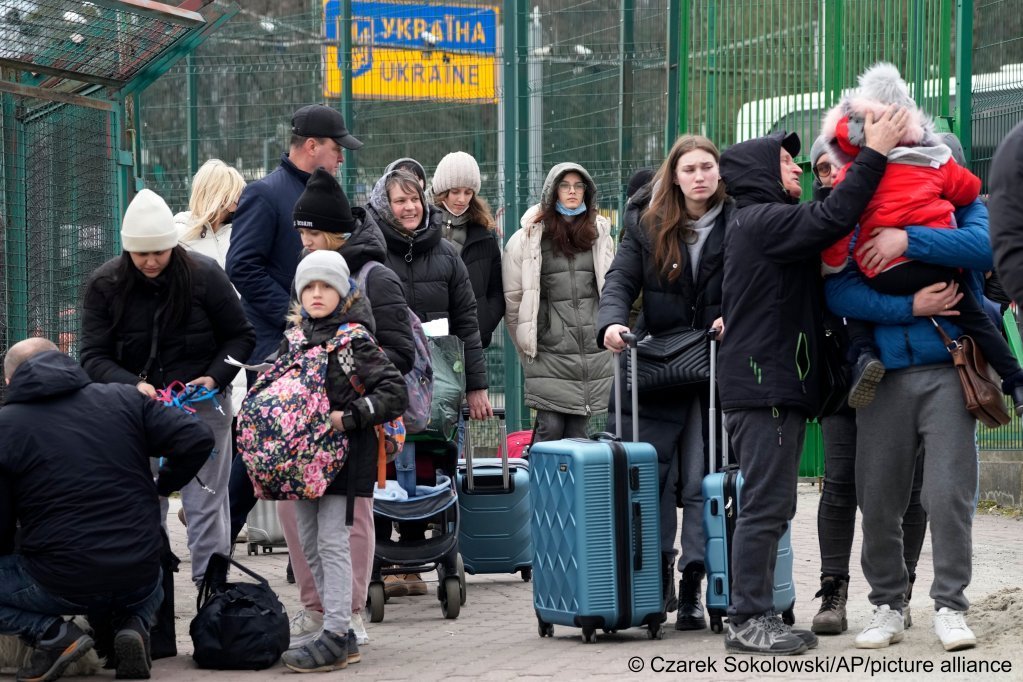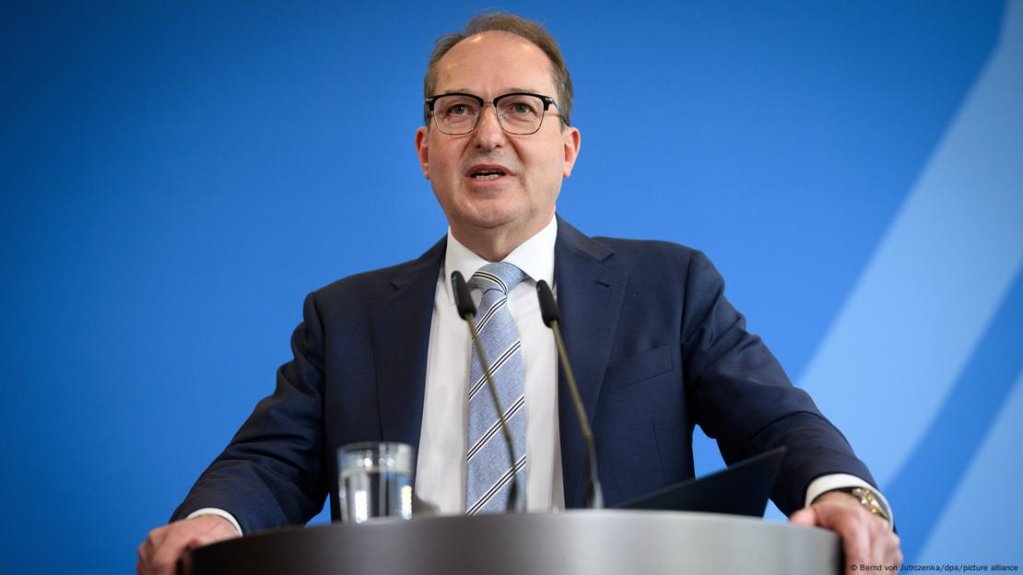The number of people living in Germany as recognized asylum seekers or other individuals with a confirmed right to protection rose to a total of 3.3 million in 2024, according to official figures. This marks a rise to 4.1 percent of the population, which the new government is trying to lower on multiple fronts.
According to Germany's Central Register of Foreign Nationals, an additional 132,000 individuals with a protection status under international law were living in Germany in 2024 compared to the previous year.
These numbers include recognized asylum seekers as well as people with limited protection status — such as subsidiary protection.
According to the Federal Statistics Office, the 3.3 million recognized refugees comprised more than 1 million war refugees from Ukraine, 713,000 Syrians, 348,000 Afghans, 190,000 Iraqis and 157,000 Turks as well as about 277,000 people from various parts of Africa, around half of whom came to Europe from countries situated around the Horn of Africa, such as Somalia, Ethiopia and Eritrea.
In broad terms, one in every 25 people in Germany is now a recognized asylum seeker in Germany's overall population of 83.3 million — although that ratio can vary significantly in different regions.
Read AlsoRefugees and asylum seekers in Germany: Five things to know
A young refugee population
Further statistical data revealed that the average age of all recognized refugees was 32 years of age, which compares to an average German population age of 45.5.
Ukrainians in Germany were found to be on average 35 years old, while Syrian and Afghan refugees were generally younger at 28 and 27 years on average, respectively.
Women made up 45 percent of the total population of recognized refugees in Germany; however, among the Ukrainian population, the number of female war refugees stood at almost 60 percent — chiefly because most Ukrainian men have to stay behind as reservists in the war against Russia.
Children and teenagers under 18 made up slightly more than a quarter of Germany's recognized refugee population.

Read AlsoGerman Cabinet approves stricter asylum measures
Europe's biggest refugee population
Over 82 percent of the people recognized to be in need of protection in Germany had a valid residence permit in Germany, equating to 2.7 million individuals in total.
Meanwhile, 427,000 held a pending status, which signifies that a final and legally binding decision on their status had not yet been made in their case.
Over 171,000 people meanwhile had their asylum applications rejected but were still in the country despite being obliged to leave. In such instances, deportations or voluntary returns can take months or even years to organize.
Another 136,000 individuals were found to have tolerated status in Germany (a so-called "Duldung"), which signifies that although they do not have a collective reason to be given asylum in Germany (such as suffering persecution), they could not be deported either.
This can be due to missing documentation, personal illness or even a lack of a deportation framework on the part of the German government with their country of origin.
Read Also
Germany's asylum rejection policy faces multiple inroads – not only at borders
Chancellor Merz seeks to enact sea change in asylum policy
Chancellor Friedrich Merz, who took over government two months ago, is focused on lowering the number of refugees coming to Germany.
The vast majority of people seeking protection in Germany enter the country by crossing its land borders; however, Germany only borders countries that are deemed safe and are members of the European Union — with the sole exception being Switzerland, which is not a member of the EU but is recognized as a safe country as well as a close partner by the entire bloc.
According to Merz's reasoning this means that asylum seekers should lodge their cases in another EU country (plus Switzerland) before they reach Germany, depending on whichever route they take. In fact, asylum seekers are technically responsible for filing their claim in the first EU country they reach as part of the so-called Dublin regulation.
But many fail to do so as they intend to travel further into the bloc, for example to reunite with family or to move to an area in which their home culture is represented more strongly.
In order to prevent asylum seekers from reaching Germany, the interior ministry has beefed up checks on Germany's land borders to turn asylum seekers away — a move that has been criticized by several of Germany's neighbors.

Read AlsoGermany turns first asylum seekers away at border — report
New limits to family reunification
In a further step designed to disincentivize people from coming to Germany, the government recently paused family reunification for some categories of refugees, notably those who had only been given the status of subsidiary protection.
This affects in particular Syrian war refugees, including those who had already been granted reunification rights and were only waiting their turn to send for their families.
This development has also drawn criticism, with refugee rights groups lambasting the move as a breach to the basic right to family.
Read AlsoGermany: Family reunification suspended for two years in 'subsidiary protection' cases
Proposed caps refugee acceptance numbers
The new German government is also considering the introduction of a cap on the number of people that can be given protection status.
This debate is however not exactly new; former Interior Minister Horst Seehofer, who was in charge from 2018 to 2021 had already floated the idea of an upper limit of a maximum of 200,000 refugees per year, saying this rate of admissions would be manageable for Germany's public resources.
However, since the beginning of the Merz government, there have been discussions of further curtailing that limit.
In the run-up to his parliamentary vote as the next chancellor, Merz had already said that this limit should not be "six figures," indicating it should be under 100,000 but avoiding naming a precise number.

Current Interior Minister Alexander Dobrindt has now echoed those sentiments, saying he wanted to reduce the annual number of asylum seekers to well below the 200,000 mark.
"There is of course a limit to a country's ability to integrate refugees. And that's why it was right to talk about upper limits in the past," he said in an interview with the German weekly print magazine Focus.
He highlighted that in the past two years alone, former Interior Minister Seehofer's suggested figure had been significantly exceeded, with over 600,000 asylum seekers admitted in 2023 and 2024 — in addition to well over a million Ukrainian war refugees, who under EU law enjoy special privileges.
In the face of these numbers, Dobrindt said that "we can no longer work with a theoretical upper limit of 200,000 — from today's perspective, that would also be far too much."
He added, however, that legal migration routes needed to be strengthened while reducing the number of asylum seekers, highlighting Germany's dire need for foreign skilled labor.
Read AlsoWhy Germany struggles to attract African skilled workers
with dpa, KNA
